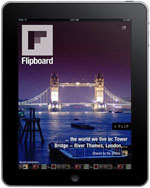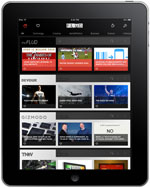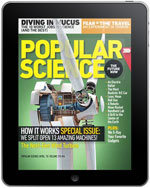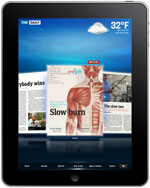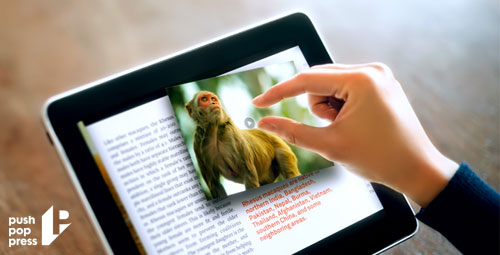Where's the paper boy gone? close
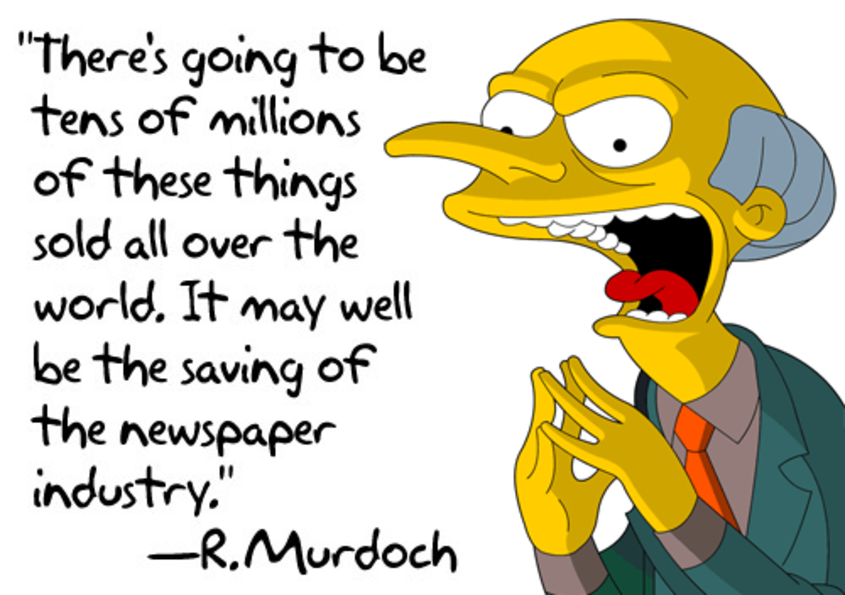
Murdoch was right claiming that the iPad was going to be a "game changer": it's been dominating the "tablets" market ever since its release in 2010 (From the second quarter to the third quarter 2010, the overall media tablet market grew 45% percent and has been driven "almost exclusively" by the iPad (1)) and has had a tremendous impact on how people consume information. As of December 2010, 14.79 million iPads have been sold, making the iPad the best-selling tech gadget in history. iOS and its "exclusive" apps have definitely contributed to its success, and have drastically changed the way we experience Web browsing, gaming and media. I don't know about you, but I haven't purchased a single magazine (nor read news on my computer) since the iPad introduction. I've been purchasing, reading and sharing news & articles right from the comfort of my couch. The iPad has become my breakfast companion, and I thought I'd give you a tour of how it got there in this regard, app by app.
The pioneer
 Wired Magazine (now Wired Reader for iPad)
Wired Magazine (now Wired Reader for iPad)
Wired for iPad was the first (good) example of what publishers and content creators can achieve on tablets, offering additional value compared to the print version (explanatory animations, videos inside the content, gesture-driven reading, animated/video ads etc.). Although this first attempt at a tablet magazine wasn't appreciated by everyone (many disliked the fact that users had to purchase every release as a new app), it kicked off the wave of "newsstand" apps.
Personalised social magazines
Pulse was introduced as a "clean and elegant news reader" and redefined the way we consume news feeds on a mobile device. By providing a manageable grid of boxes on the iPad display - each row being a new feed - coupled with its snappy interface, it transported Pulse News Reader into the "top paid" category in just a matter of weeks.
Flipboard is a more personal, social magazine. It integrates with your Facebook and Twitter accounts, and displays news in an easy-to-read, magazine-like format. Flipboard got notorious for it's animations and simplicity (e.g. you "turn" pages just like you would do on a paper magazine). Flipboard is still my favourite way to consume news on the iPad and keep in touch with my friend's activities.
Flud is the latest visual news-reader app coming to the iPad, and describes itself as "a modern, beautiful and personalized mobile news ecosystem with the vision to empower it's users to engage and broadcast relevant news topics to their social networks". Flud takes Pulse's concept one step further, offering a much tidier experience to it's users.
The big name's magazines
Published by Bonnier, Popular Science on the iPad continues in Wired's footsteps: bringing a paper magazine to life on the iPad. Its interface is amongst the best around, offering a nice level of interaction possible with the content.
Project Magazine, produced by Virgin, is one of the most recent additions to the magazines category on the iPad. It's an incredibly polished magazine, covering a rather broad array of topics, with really great content and few advertisements (especially compared to Wired). Definitely a tablet magazine done right.
The latest arrival in the magazine category is no less than Rupert Murdoch's creation: The Daily. With a $30 million initial investment, and costing around "half a million dollars" to produce each week, The Daily has been highly anticipated. It's also the first app to introduce and rely on Apple's new subscription system. Unfortunately, The Daily suffers from numerous crashes and slow (to say the least) startup times. Hopefully, these problems will get addressed in coming revisions.
What's next?
Far from being monotonous, there is still room for improvement in this category of apps, particularly in the area of interface design and how the content is experienced. I think this is where companies like Push Pop Press can enter.
Push Pop Press was founded in February 2010 by a team that includes ex-Apple genius designer Mike Matas. They present themselves as "[…] bringing together great content and beautiful software to create a new breed of digital books. Books that let you explore photos, videos, music, maps, and interactive graphics, all through a new physics-based multi-touch user interface".
We know very little about it yet, but John Gruber from "Daring Fireball" has made laudatory comments on what he has seen from the app so far. Judging by his post, it looks like they have done an amazing job, and it could very well be the precursor of the next generation of tablet-specific "newsstands" & magazines. It's definitely an app to keep on your radar.
The iPad has changed, and is still changing the way we consume information and media, yet we're just at the beginning of the tablets era and I am sure we will continue to be amazed by future tablet-specific creations. Just like Sinatra would say "the best is yet to come"!
(1) Data sourced from http://arstechnica.com/gadgets/news/2011/01/tablet-market-grows-45-quarter-over-quarter-driven-by-ipad.ars

